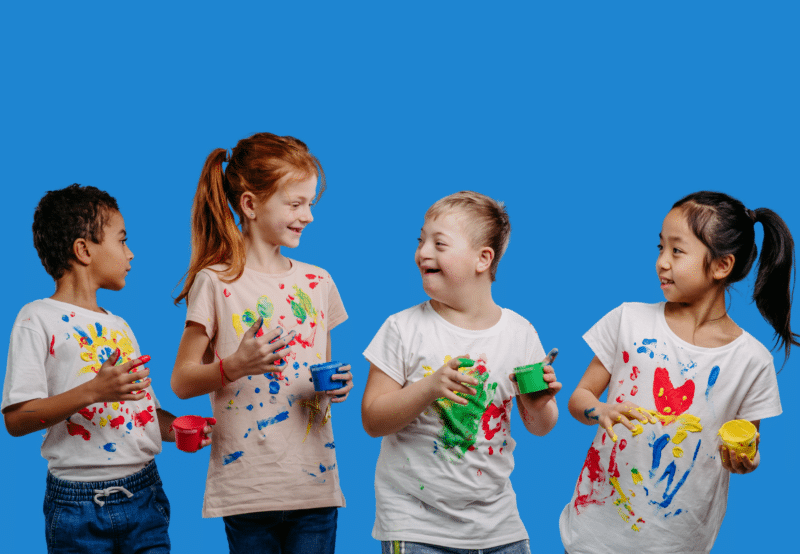As educators, we know that no two students are alike. Each student comes with their own abilities, strengths, interests, and personality – and they all deserve to be celebrated for who they are. The ability to recognize and celebrate differences in one another is a crucial skill for children to learn, but it’s not always intuitive. This can be especially true for peers of students with disabilities.
For example:

Differing needs and abilities can be confusing for children, but as educators, we can create a learning environment that teaches students how to celebrate those differences.
Get-to-know-me activities are a great way for students to learn about themselves and others. Examples include having students draw pictures of their favorite things (food, places, etc.) and share with their peers or playing games such as Would you rather?. You can also ask probing group questions such as: What if you had to eat the same food every day? What if everyone in our class looked exactly the same? Activities like these build social and self-awareness as students learn that they are unique but can also find commonalities with their peers.
For example:
Nathan learns that his classmate Rodrigo, who uses an AAC device, has the same favorite food: tacos! Nathan also learned for the first time that his best friend, Amir, can speak a different language.
Building these activities into your lessons, especially at the beginning of the year, can lay the foundation for helping children see differences as positive attributes in themselves and others.
You can find several activities that build these skills in Launch for PreK, with themes including: All About Me, This Is My Family, Friends in Our Class, and Where I Live.
The research is clear that children benefit from seeing themselves reflected in the spaces they interact with regularly. This means, as teachers, it’s important to include people with different backgrounds in literature, curriculum, play spaces, and classroom decor. Examples of creating an inclusive classroom space include:
TeachTown’s Launch for PreK curriculum shares stories that include and/or focus on people of various cultural groups, racial and/or ethnic groups, ability groups, and/or use different communication modalities and visible supports.
For many young students, the classroom may be the first time a child interacts with someone who has a disability. When presented with a peer who looks or communicates differently than them, children may respond in a manner that could appear unkind when they are simply processing this new information. One of the best ways to address this is to teach students about differing abilities. Of course, acceptance and respect should be taught in a developmentally appropriate manner that continues to be reinforced as grade levels progress.
As a class, acknowledge and celebrate events such as Disability Pride Month and World Autism Acceptance Day.
Note: Students with disabilities in the class should never be used as an example during these discussions. If a student wants to share about their disability, it should be by independent choice and with the permission of their guardians.
Kids are naturally curious, and that’s a good thing! As educators, we know that curiosity is the first step to learning. This can also apply as students take in the world around them and the people they encounter. We want students to ask questions, but it’s important for them to learn how to ask questions in a way that is kind and respectful. Some examples for young students may include:
Remind students that if they are unsure if a question is appropriate, they can always ask a teacher.
Our PreK-12+ whole child approach celebrates your learners through:
✔ Accessible learning for all levels and modes of communication
✔ Literature that represents a variety of people and experiences
✔ Current events (enCORE Events and Launch Around the World) that include lessons celebrating people, cultures, and events from around the world.
Tour TeachTown and learn more about how we can celebrate your learners together!
Contributor Bio
Tasha McKinney brings over eight years of experience in education. After four years of teaching outdoor education programs, she pursued a Master’s in Early Childhood Special Education at the University of Texas. Since then, she has worked in classroom settings and created content for EdTech companies.